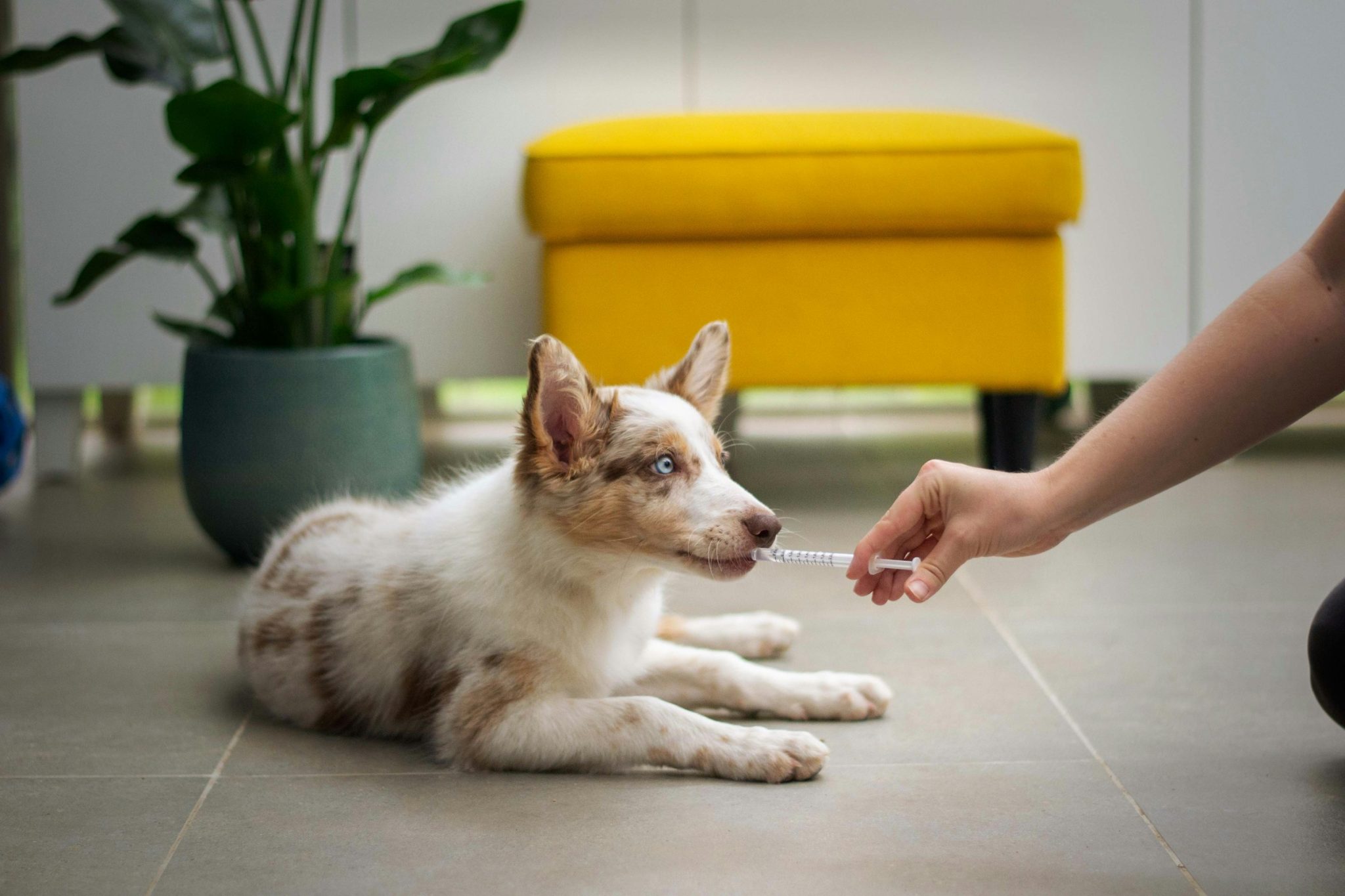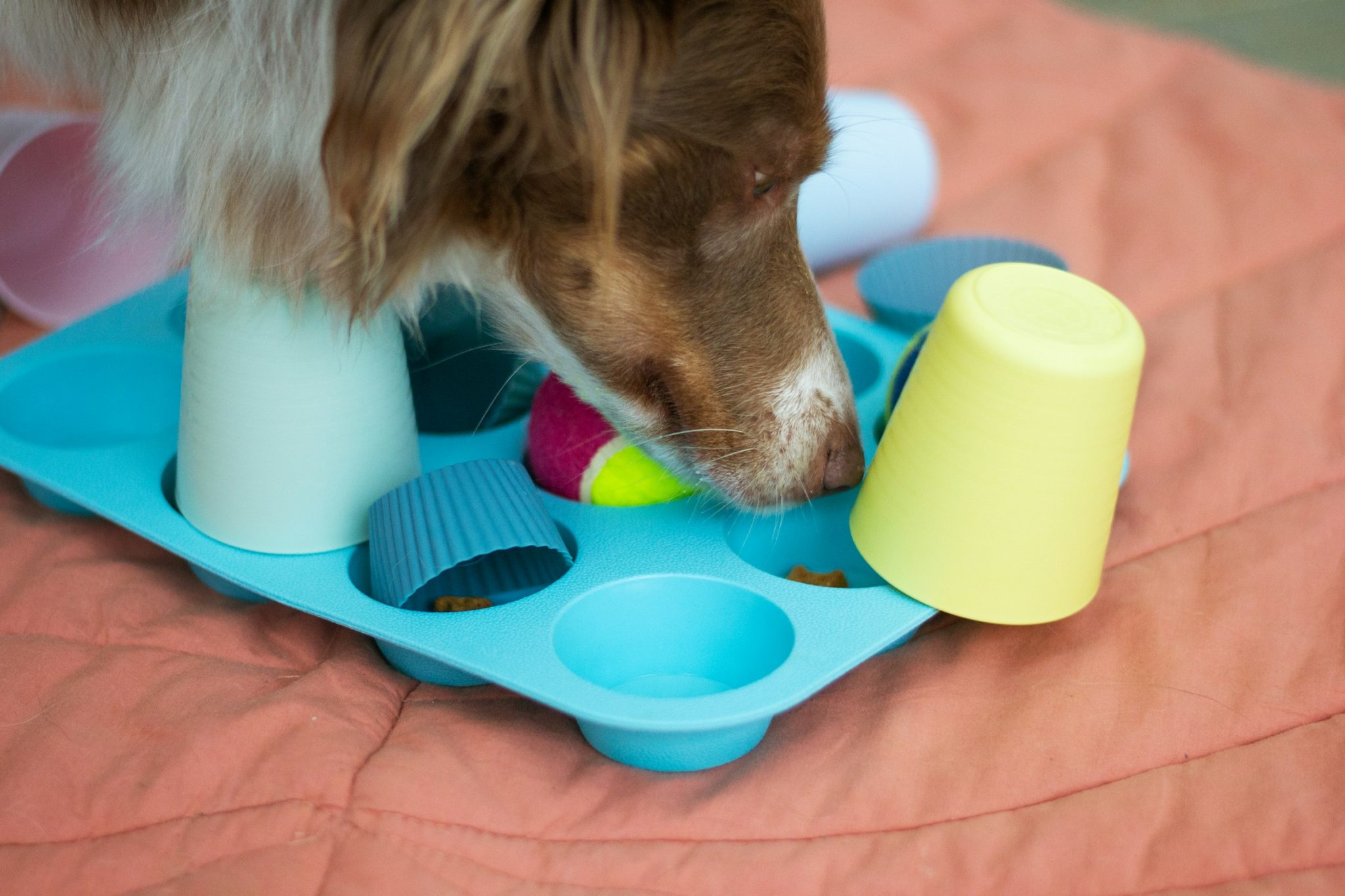Few things are more heartbreaking to a dog parent than seeing their dog sick. If your dog is currently recovering from a serious illness or injury, you likely can’t wait for them to recover and be back to their healthy and energetic self.

Part of their recovery plan may be medication prescribed to them by your veterinarian. But as many dog owners know, sometimes getting their pup to take their medicine in pill or liquid form is easier said than done. Your dog may be reluctant to take their meds because of the latter’s taste or smell, which can add to your concern and your mutual frustration over the situation.
To make meds time more pleasant for your dog and more manageable to you, here are six “hacks” for administering their medication:
1) Conceal the Medicine with Food
This is one of the quickest and most effective ways to get your dog to take their medicine, especially if it’s in pill form. It relies on a dog’s natural inclination to enjoy meals or treats, making it less likely for them to notice the medicine in their food.
When it’s time to feed your dog, grab their usual dog stainless steel bowls and dog food. You can also hide the pill inside a food morsel—like hidden within a berry, an apple wedge, or a glob of peanut butter—and cover it up so that they won’t immediately recognize the foreign object in their meal.
Choose a food item that is highly palatable and that can easily conceal the pill, such as mashed dog food, so that your dog will focus more on eating than on avoiding their meds.
2) Crush or Dissolve the Medicine
For dog owners with pets that are particularly adept at finding and avoiding pills hidden in their food, don’t lose hope. Some medications can be crushed or dissolved in water and then mixed with a small amount of the dog’s food.
You can crush the medicine and mix it with a small portion of wet food to make sure that your pooch consumes the entire dose. Just remember to use only a small amount of food so that you can make sure that their meds are fully ingested. Give your dog the rest of the meal once they successfully swallow their medication.
Take note that this method should only be used after you consult your veterinarian about it, since some medications lose their effectiveness when their forms are altered or they may have an unpleasant taste when crushed. This, in turn, can make the food unappealing to your pet and defeat the purpose of getting them to consume their meds.
3) Change Your Chosen Delivery Method
For liquid medications, or in case your dog refuses to take their pills—even when it’s crushed up or mixed with their food—you can try other delivery methods. Try using a syringe or dropper medication that can be directly administered into your dog’s mouth. Place the syringe at the back of their mouth, near their cheek, to minimize their discomfort and make it easier for your dog to swallow their medication.
Remember to speak softly to your pet and maintain a calm demeanor throughout the process so that your dog remains relaxed while they ingest the medicine.
4) Practice Positive Reinforcement
Positive reinforcement can also be applied to your dog’s medication routine as well as in their training regimen. Rewarding your pup with a treat or praising them after they take their medicine reinforces the behavior and encourages them to take their medication with little to no resistance in the future.
The trick is to choose a reward that the dog finds highly motivating, whether it’s a favorite treat, extra playtime, or cuddles. You should also be consistent with your rewards to help your pet understand that taking their medication will lead to a positive outcome.

5) Condition Your Dog
If your dog still feels uncomfortable or uneasy when taking their medication, you can try to acclimatize them to the actions and routines related to taking their medicine. Give them non-medicated treats for practice, or fill a syringe with water and let them drink out of it. These actions can help your dog become accustomed and even receptive to the different steps involved in taking their meds.
6) Administer Your Dog’s Meds Manually
Lastly, if all else fails, direct manual administration of your dog’s medicine will be your last resort. You will have to open your dog’s mouth and place the medicine as far back on their tongue as possible.
You’ll then have to encourage your dog to swallow the medicine by holding their mouth closed and stroking their throat. Just note that while this method is effective for its straightforwardness, it can sometimes cause stress or discomfort to your pet. Again, only resort to this method if nothing else works, and make sure to offer your dog their favorite treat or show them affection to help end the experience on a positive note.
Some techniques of administering medicine may be effective for your dog, while others, not so. Make it a point to explore all the possible options listed above so that your dog can take their meds on schedule and recover in no time.
- About the Author
- Latest Posts
Whether she is researching the latest trends in home decor, life-changing destination getaways, or the best way to maintain your finances, Dewey takes pride in leaving no stone unturned. She is passionate about distilling and delivering high-quality information that you can use to upgrade your life.

